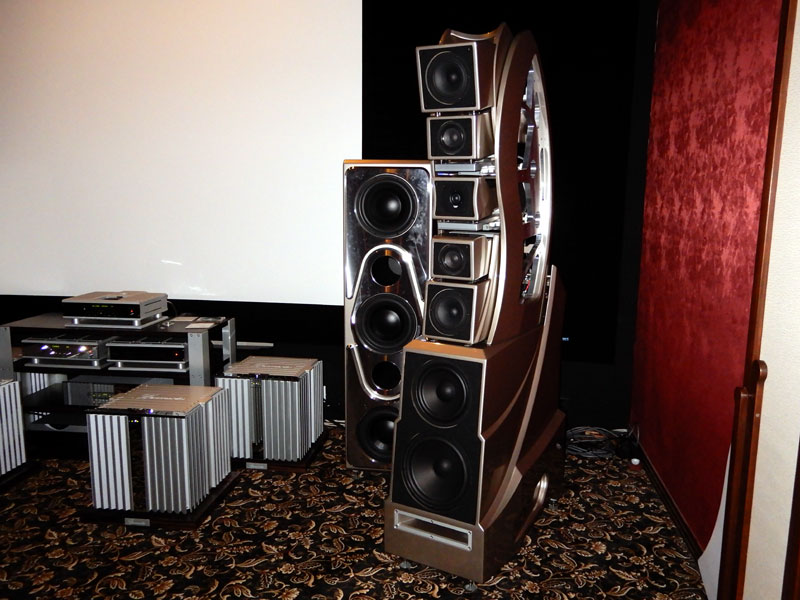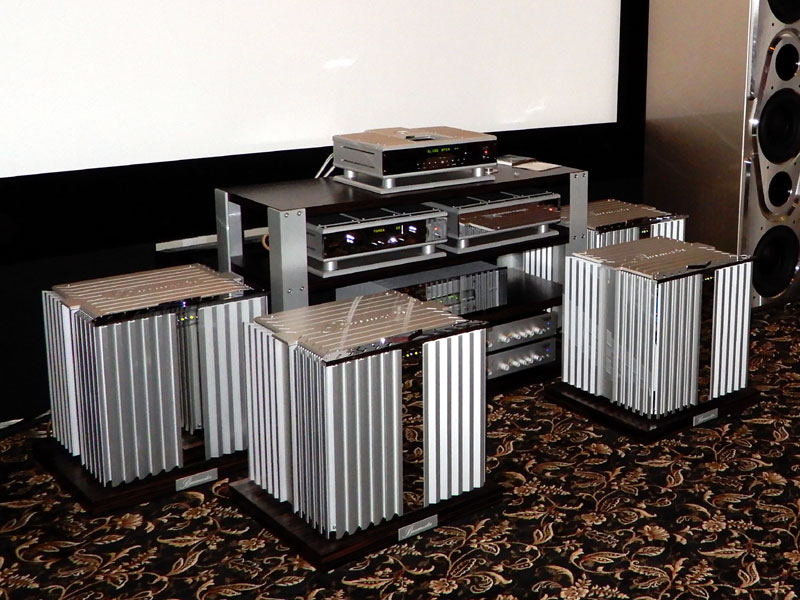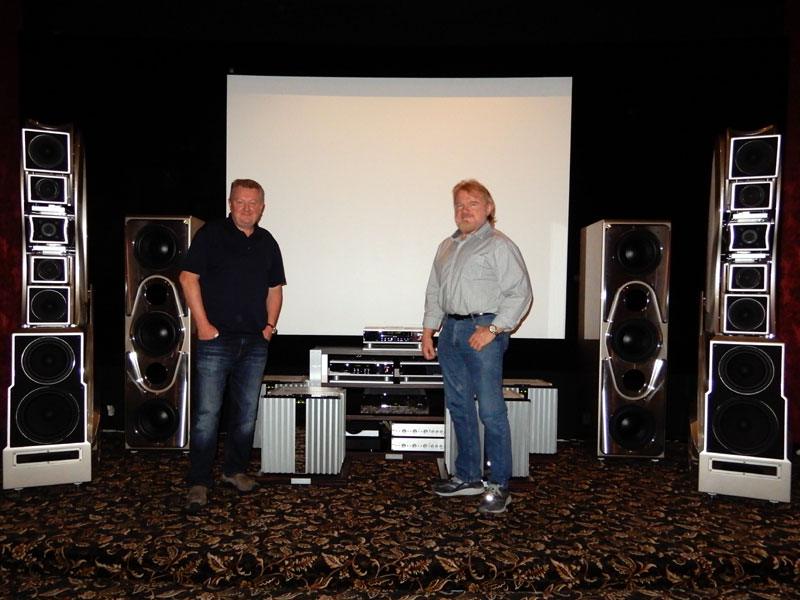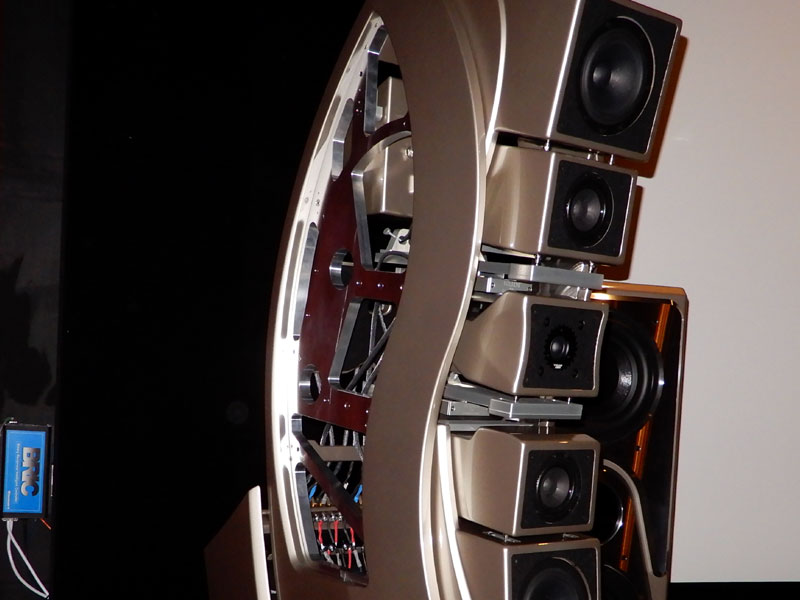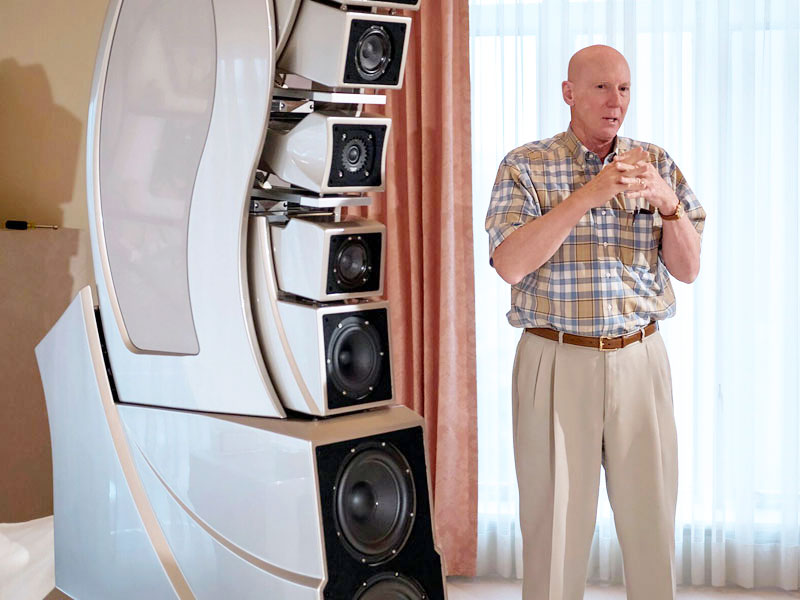OMG at LMC
s I walked the corridors of LMC Home Entertainment's Scottsdale, Arizona, store, examining all of the audio gear, I thought about the shoemaker's children, those cherubs of folklore who are perpetually barefoot because their papa has no time to make shoes for them. LMC is located in an upscale shopping plaza, each store having its own glass front and entrance. Because of the layout and space, LMC resembles an upscale car dealership more than any audio shop with which I'm familiar. There are no racks of audiophile records, no display cases filled with phono cartridges and tweaks. The hallways are wide and uncluttered, the décor tasteful. Back to the shoemaker's children. The lineup of equipment at LMC caused me to wonder if owner Mike Ware has anything more than an iPod connected to his TV's soundbar at home, so mind-boggling was the audio equipment on display in his store -- equipment he gets to hear all day, every day. In one room, MartinLogan's big Neolith speakers ($80,000 per pair) were set up next to a pair of even bigger McIntosh XRT2.1K speakers ($130,000 per pair). In the next, huge and expensive Sonus faber SE speakers ($250,000 per pair) that I've never seen before were next to top-of-the-line mbl speakers -- not the familiar 101s, which I've heard and enjoyed many times, but the more expensive X-tremes ($263,000 per pair), each of which looks like a pair of 101s aligned vertically, head to head. In a corridor, another pair of McIntosh speakers taller than I am sat unused. In the store's lobby, Wilson Audio Alexxes ($109,000 per pair) were playing.
It was literally the case that the equipment in LMC's store was more tantalizing than what I saw and heard in Las Vegas during CES. Including the electronics, there had to be a few million dollars worth of equipment on LMC's sales floor, and that doesn't include what was in the store's final room, an impressively large and opulent theater (there was nothing about it that would make adding "home" as a prefix seem reasonable). Here was the system: Wilson Audio WAMM Master Chronosonic (MC) speakers with Wilson WAMM Master Subsonic subwoofers ($850,000 for the system), four Burmester 909 amplifiers configured for mono output ($80,000 each), a Burmester twin-box 077 preamp ($65,000) along with a Burmester 069 CD player ($50,000) and Burmester 048 power conditioner ($10,000). The music streamer was a Linn Klimax DSM ($23,380), through which we listened to streaming music via Qobuz. The cables were new to me: Atlas Asimi and Mavros interconnects and speaker cables at a combined price of roughly $70,000. The theater in which the system was set up was unusual, at least to me. I don't know if I've ever heard an audio system, let alone one as ambitious as this, in such a space. First, the room was huge, 21 feet wide, 40 feet deep and over 16 high, with stadium seating and an actual stage, neither a feature of any hotel or home listening room I've been in. Changing seats changed the perspective -- front versus middle row, or further back -- more than I expected, and more consistent with a concert hall than a mere listening room. In any case, my ears needed a few minutes of listening to adjust.
But even before adjusting to the room, I thought the system sounded spectacular, pushing reproduced music closer to the sound of live music in two readily apparent ways. First, the scale was immense, the performers occupying the entirety of the stage on which the system was arranged, producing truly life-sized images. I made sure to listen to cuts from recordings I knew well, including Keith Richards' Main Offender and Johnny Cash's American Recordings. "Tennessee Stud," from the latter, an intimate live cut, was more vivid than it had ever been, not just in terms of the speed of each note and even the background utterances of the audience but also the anchored, physical presence of Cash as he sang. I've been to many small-scale concerts like the one during which "Tennessee Stud" was recorded; the singer, usually sitting on a stool in the middle of the stage, sounds larger than the band arrayed around him. That's due to amplification of the vocals, the singer being the focal point, especially if he's Johnny Cash. It happened here, even down to the use of a stage for the system. The second way in which this system pushed the boundaries of reproduced sound was in its massive low-end power and all-embracing ambience. The Wilson Master Subsonics provided the kind of instantaneous bass power that I've heard only in live music and also the enhanced sense of space that good subwoofers can bring. The WAMM MCs provide bass below 20Hz, so they don't need a subwoofer, let alone a pair of them. But feeling the instantaneous, thumping weight from a stack of huge PA speakers powered by huge amps, as well as sensing the room's dimensions, are what the Wilson subs provided. The Master Subsonics, which deserve some coverage of their own, may not be necessary, but they make a case for being more than an option with the WAMM MCs.
Mike Ware (right) and Steve Carrol of LMC Home Entertainment. Ultimately, listening to the WAMM MCs at LMC was an experience as singular as hearing them in Dave Wilson's listening room over a year earlier. Roy Gregory boiled the experience down to "the balance between direct and reflected energy" -- the sense that, as he shifted seats, the balance shifted "exactly as it does in the concert hall." For me, it was something else. Realistic scale -- a band performing on LMC's stage -- and bass power, where essentially every other speaker system buckles, were obvious. But there was also an acute kind of focus and coherence, a sense of absolute precision. Whatever the reason, this system brought to mind another singular listening experience -- in the amazing room I discussed in a previous article. That system and room leaped to mind as I listened at LMC, not just for what I was hearing but also for their proximity -- about ten miles -- from where I was sitting. Oh, to hear this system in that room, I thought. I'd pay admission.
Just seeing the WAMM MC is an experience. The sheer size of the speakers -- they're over seven feet tall -- and also their intricacy -- five upper modules fully adjustable via an internal machined mechanism that allows for infinite adjustment -- command attention. Looking more like the workings of a clock than anything you'll see on a loudspeaker, this mechanism is necessary for achieving time-domain accuracy down to 10ms, allowing the WAMM MC to correct for time smear from whatever is in front of it in the signal chain, including cables. As more WAMM MCs are sold, Wilson Audio amasses data on the products with which the speakers are used, and these aid in subsequent setups, making for ever-greater system-wide time-domain accuracy. This may be a major reason the WAMM MCs sound like a new paradigm: you can't hear the effects of the time-domain issues they correct until they are gone, and no other speaker can banish them to the same degree.
LMC's system conjured musicians with ease, in all their
power and glory, but there was still something missing. These WAMM MCs were the exact same
pair of speakers I heard in Provo, Utah, in late 2016, when they were debuted to the
press. What was missing was the late Dave Wilson, in all his power and glory, discussing
the broad and fine points of the speakers, patiently, meticulously. I relied on memories
of Dave as I sat in Scottsdale, in the low light, stunned again by his greatest sonic
creation. |

